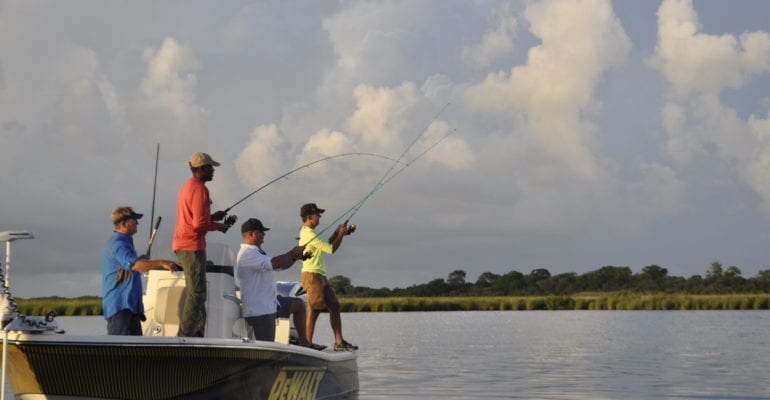The Louisiana Department of Wildlife and Fisheries (LDWF) is alerting the public that the current mix of sizzling summer temperatures, extended cloudy weather, and storms may lead to inland (freshwater) and nearshore marine fish kills in waterways across the state.
Facing those conditions, LDWF is stressing the importance of reporting fish kills to the Department by following the instructions on our fish kill webpage.
Here’s what’s happening. Warm water has a lower carrying capacity for dissolved oxygen than cool water, creating an already delicate balance between oxygen-producing and oxygen-consuming aquatic life in waterbodies. When something alters that delicate balance, the scales can easily tip in the wrong direction and cause a hypoxic (low oxygen) fish kill.
Those factors include: low or stagnant water; extended excessive hot weather; heavy rainfall; extended cloudy weather; decaying debris/vegetation in the water; turbid runoff; or nutrient-laden runoff. The bayous, marshes, and ponds in the southern part of the state are particularly vulnerable to hypoxia, or the depletion of oxygen in the water.
Different species and sizes of fish have varying tolerances for hypoxia, so fish kills may only affect some sizes and species of fish while other sizes and species survive. Aeration of ponds, if possible, can help to alleviate hypoxic conditions and aid in the decomposition process after fish kills occur.
Low oxygen fish kills have occurred in Louisiana since before recorded history, and our ecosystems have evolved to be resilient and bounce back from these naturally occurring events. It is very rare that all fish and aquatic organisms in a waterbody are killed during these low oxygen events. Many fish and aquatic organisms will find refuge from the hypoxic waters and live to reproduce.
Even in cases of severe fish kills, aquatic organisms will usually repopulate affected areas by dispersing from nearby, connected, unaffected areas. This is one reason why maintaining adequate aquatic connectivity and fish passage (keeping naturally connected systems connected) is so important. In the year or two after a fish kill, survival of the young is higher than normal since there will be fewer predators and more resources available to the young fish.
There are often temporary negative impacts to recreational and commercial fishing activities immediately following fish kills, but systems normally recover on their own. Patience is required for the mostly young fish in these recovering systems to grow into catchable sizes. For this reason, stocking is not usually warranted following most low-oxygen fish kills and will not normally hasten recovery.
Decomposers and scavengers, including microbes, crawfish, crabs, fish, alligators, turtles, raccoons, and birds, will do their part in helping to clean up fish carcasses. When fall arrives, the shorter days and cooling temperatures lower the risk of low-oxygen fish kills.
Fish kills resulting from other factors such as spills, point of source pollution, and bycatch are possible any time of year, and should also be reported. Extra measures and consideration for cleanup and recovery from these types of events are often necessary.
Documenting fish kills in Louisiana is important whether caused by natural or non-natural events. Please report them to LDWF so biologists can investigate and document the kill as soon as possible. For information on how to report a fish kill or more information about the causes of fish kills, visit our fish kill webpage.
______________________________________
Note that the above information pertains to Louisiana’s freshwater habitats and some nearshore marine habitats. The Gulf of Mexico Hypoxic Zone is a related, but different, phenomenon involving persistent seasonal hypoxic conditions in the Gulf of Mexico. More information on the Gulf of Mexico Hypoxic Zone can be found at the Mississippi River/Gulf of Mexico Hypoxia Task Force website.





